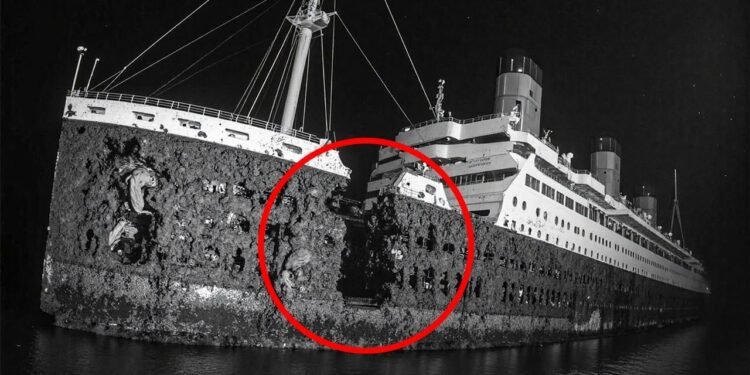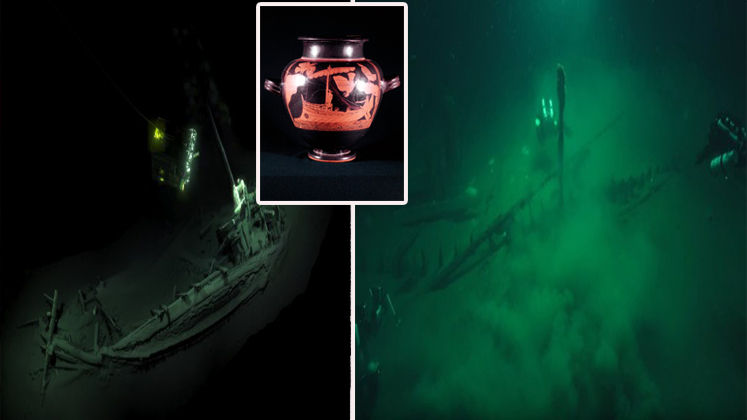A groundbreaking digital scan of the Titanic has revealed its wreck in unprecedented detail, offering fresh insights into the ship’s tragic end. At 12,000 feet below the Atlantic, high-resolution images capture the Titanic as if it sank yesterday. Deemed unsinkable, the liner vanished on April 14, 1912, claiming over 1,500 lives. For decades, survivor accounts and deep-sea dives pieced together its story, but now, photogrammetry—a process creating a 3D model from photographs—has unveiled hidden clues buried for over a century.
Photogrammetry’s Power: A 3D Resurrection
Atlantic Productions and deep-sea mapping company Magellan led an ambitious 2022 expedition, using underwater robots to capture over 715,000 high-resolution images of the wreck, resting 12,500 feet deep. In 2024, an additional 2 million images refined the model. Advanced software stitched these images into a virtual replica, accurate to a millimeter, revealing details like individual rivets, the number “401” on a propeller, and scattered personal items. Unlike the grainy sonar maps from 1985, this model clarifies the wreck’s condition, debunking myths—such as the theory that the Titanic was swapped with its sister ship, Olympic—and tracking decay, like missing railings and collapsing stern sections.
Photogrammetry is non-invasive, preserving the wreck as a digital museum without disturbing its sanctity, unlike controversial salvage operations. Featured in National Geographic’s Titanic: The Digital Resurrection, this scan serves as a forensic tool, enabling experts like historian Parks Stephenson to analyze how the ship broke apart and where the chaos unfolded.
The Bow: A Haunting Snapshot of 1912
The Titanic’s bow, upright and remarkably preserved, emerges from the darkness in the scans. Its thick steel plates and teak deck planks endure, with rivets and iron studs marking where softer pine boards decayed. The anchor remains lodged, hinting at the bow’s controlled descent as water filled its compartments. A tear near the base shows where it struck the seafloor, accelerating corrosion. The bow’s iconic form, unmarred by the stern’s violent fate, evokes 1912—crew on the forecastle, passengers at the railings, unaware of the impending disaster.
The Boat Deck: Echoes of a Frantic Escape
The boat deck, where lifeboats were launched amid panic, reveals a human story. The 2022 scans show rusted steel plating, broken lifeboat davits, and surviving bronze winches and ventilators. Damage from falling structures, like the second funnel, hastens corrosion. The collapsed grand staircase, once crowned by a glass dome, exposes ruined cabins. A missing railing, noted in 2024, underscores the wreck’s rapid decay. The scans capture the urgency of lifeboat launches, preserving the bravery and chaos of Titanic’s final hours.
A-Deck Promenade: Luxury Crushed by Time
Once a first-class haven, the A-Deck promenade—enclosed for privacy—is now a crumpled relic. The scans reveal collapsed beams, corroded steel screens, and cabin walls blending into the seafloor. The deck’s proximity to the ship’s breakup point caused a “layer cake” collapse, accelerating decay. Despite the ruin, the layout hints at its past elegance, where passengers like John Jacob Astor strolled, oblivious to their fate.
The Breakup Point: Where Titanic Snapped
The breakup point, where the ship split, is a chaotic wound. The 2022 scans show crushed decks, twisted steel, and rapid corrosion from structural stress. Unlike survivor accounts of a dramatic high-angle break, the scans suggest a subtler split at a lower angle, as water flooded six compartments—beyond the ship’s design limit of four. The 2024 images show further erosion, with steel edges curling like burnt paper, capturing the moment of catastrophic failure.
The Stern: Mangled Evidence of Violence
The stern, 600 meters from the bow, is a mangled testament to its violent plunge. The 2022 scans reveal smashed decks, peeled hull plates, and a curled poop deck. Teak planks and iron rivets persist, alongside remnants like the second-class entrance and elevator system. The 2024 scans highlight ongoing collapse, with missing railings signaling rapid decay. The stern’s destruction reflects the air-filled section’s implosion as it sank, a stark contrast to the bow’s grace.
Rediscovered Relics: Artifacts That Speak
Among the wreckage, personal artifacts humanize the tragedy. The 2022 and 2024 scans reveal a bronze teleotor on the bridge, a propeller stamped “401,” and the Diana of Versailles statue from the first-class lounge. A purse belonging to third-class passenger Marian Meanwell, containing her medical card, tells of her fateful transfer to Titanic. Jewelry, shoes, and a pocket watch scatter the debris field, each item a poignant reminder of lost lives, preserved in this digital archive.
Engineers’ Sacrifice: Keeping the Lights On
The scans highlight the engineers’ heroism in boiler room 2, where a warped steel plate and an open valve show they kept the boilers and generators running as water flooded in. This ensured the ship’s lights stayed on, aiding lifeboat launches. All 25 engineers perished, their workspace now a twisted tribute to their sacrifice, as seen in the 2022 and 2024 images.
Human Stories in the Wreck: A Digital Tribute
The scans transform the wreck into a memorial. The ruined grand staircase, second-class deck house, and elevator machinery evoke lost dreams. Artifacts like Meanwell’s purse and the Diana statue connect us to passengers from third-class immigrants to first-class elites. Virtual reality explorations preserve these stories as the wreck decays, offering an emotional bridge to 1912.
Unveiling the Final Hours: Scan Revelations
The scans rewrite Titanic’s final moments. The bow’s gentle tilt suggests a slower, more even flooding than the dramatic break depicted in films. Davit positions indicate organized lifeboat launches, not total chaos. Intact electrical fittings near the grand staircase reveal power persisted post-split, a testament to the engineers’ efforts. These scans replace survivor guesswork with measured truth, offering a timeline of bravery and tragedy.
A Race Against Time
Unlike the Maheno, a shallow-water wreck that lost its structure in decades, Titanic’s depth slows decay, but not indefinitely. The scans predict that within 50 years, only the ship’s thick steel ribs may remain, resembling a whale’s skeleton. This digital time capsule, featured in Titanic: The Digital Resurrection, ensures future generations can explore the ship before the ocean claims it entirely.

























